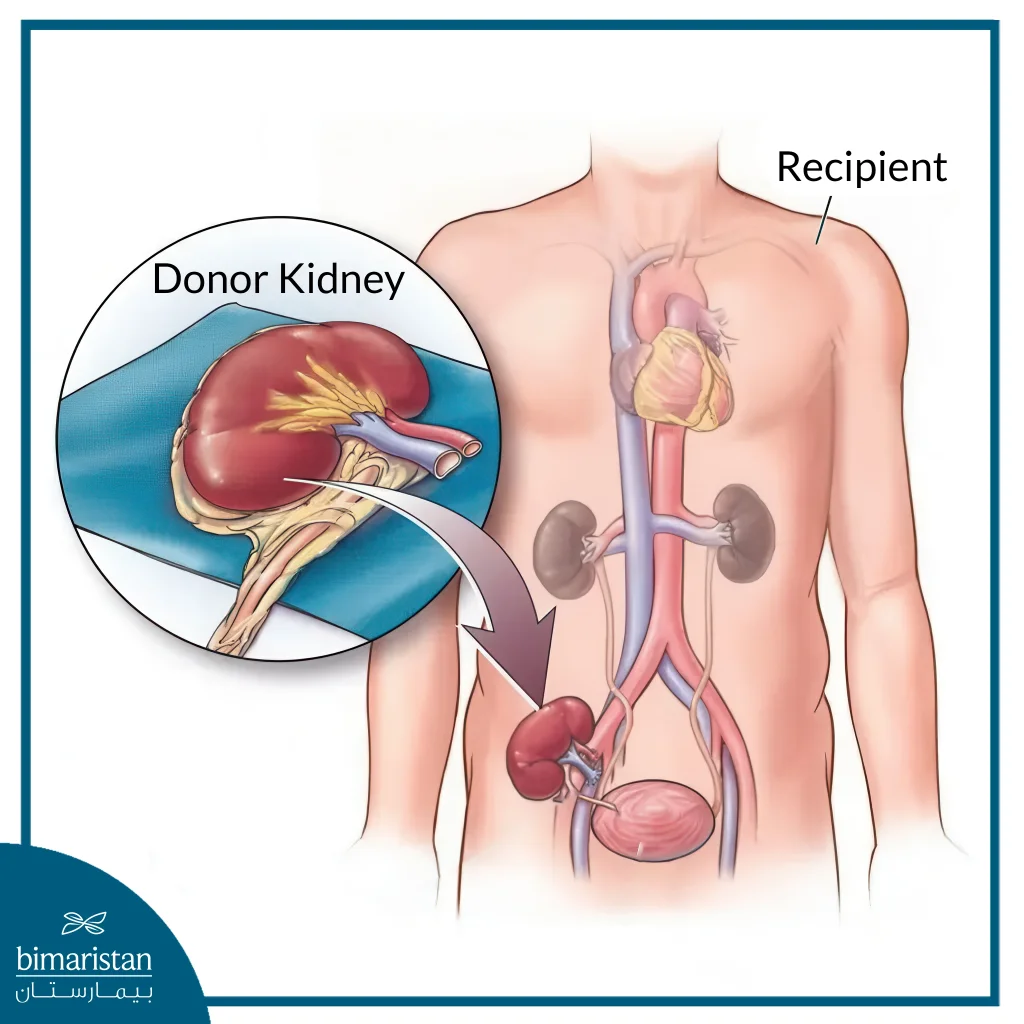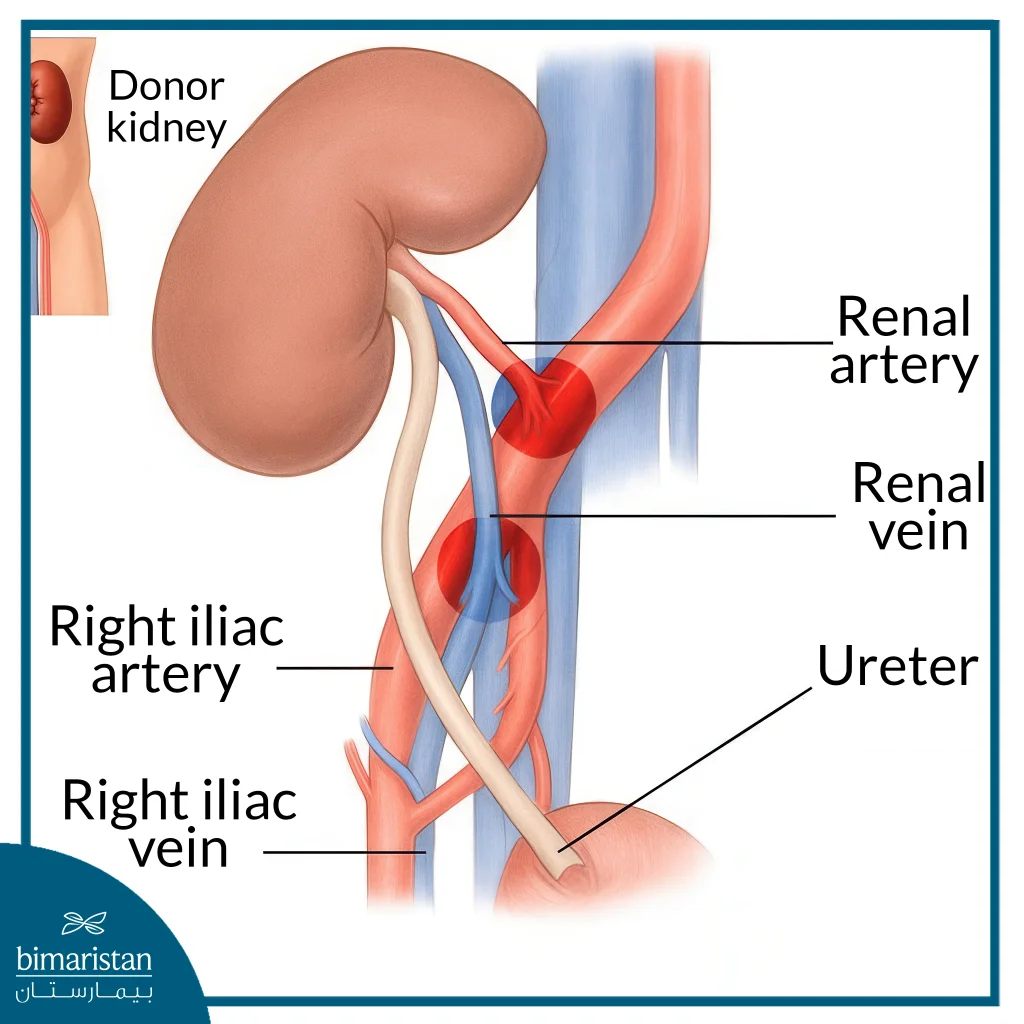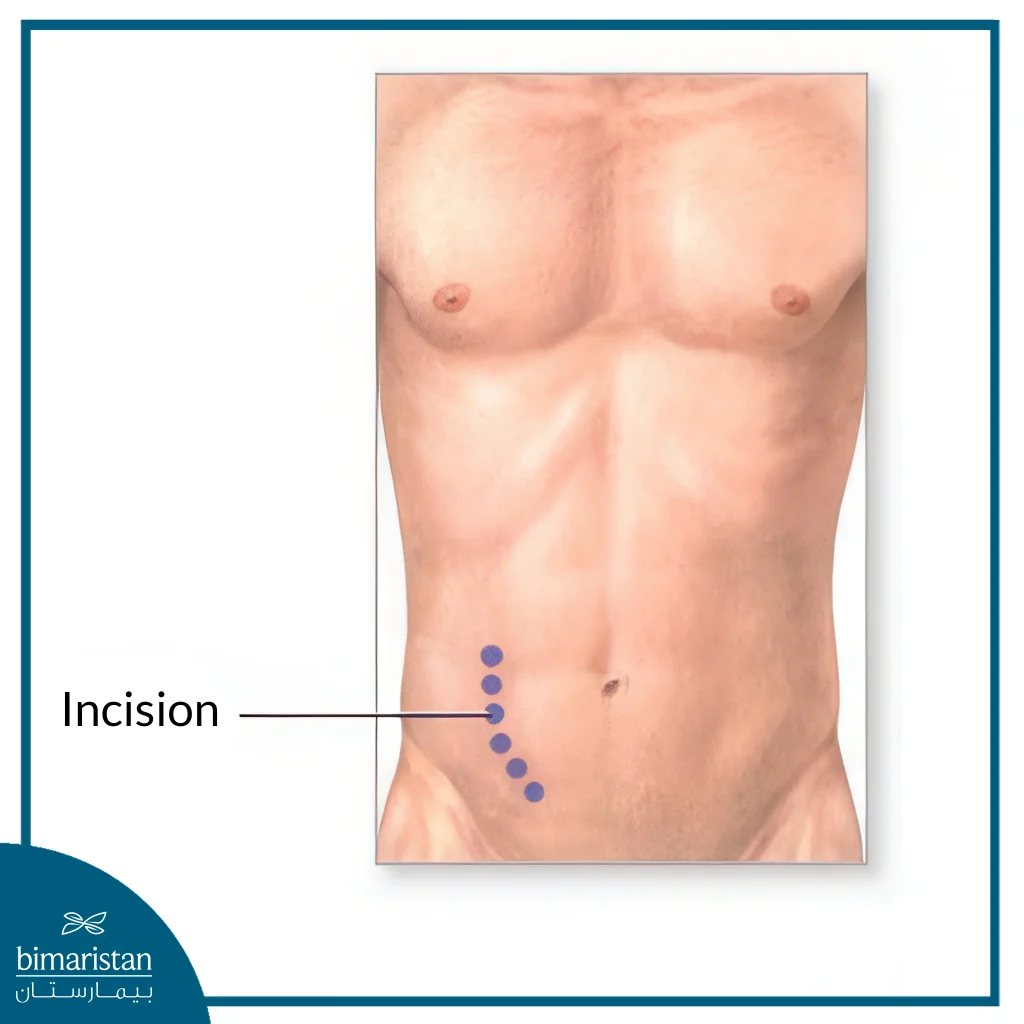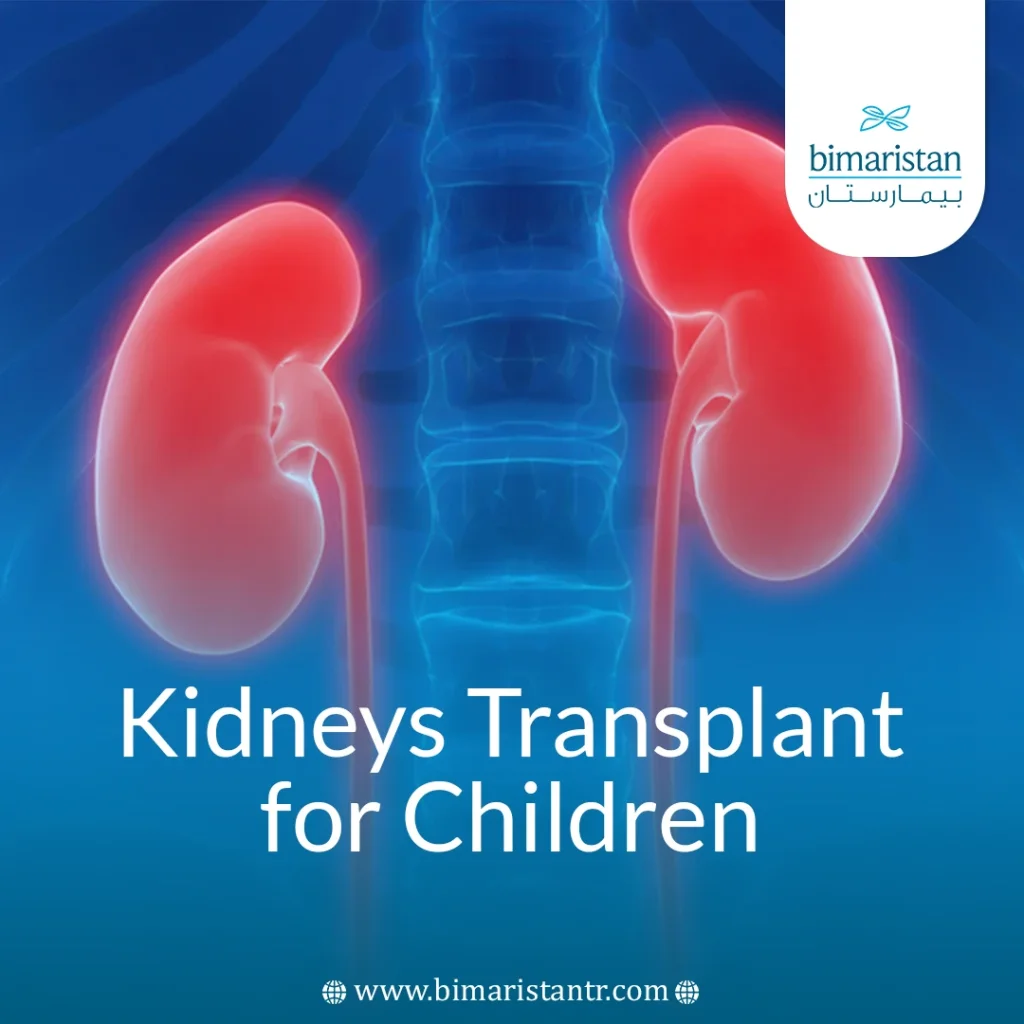Pediatric kidney transplant is one of the best treatments for chronic kidney failure, giving the child a normal life and healthy growth without the limitations of dialysis. The causes of kidney disease in children are different from adults and include congenital abnormalities, genetic diseases, and recurrent infections. It is estimated that about one in every 65,000 children in the United States develops kidney failure each year, making kidney transplantation the treatment of choice in the majority of these cases.
What is a pediatric kidney transplant?
Kidney transplantation for children is a surgical procedure in which a child’s damaged or non-functioning kidney is replaced with a healthy kidney from a donor, whether living or deceased. The goal of this operation is to restore kidney function on a permanent or long-term basis, sparing the child from continuous dialysis, as healthy kidneys play a vital role in filtering the blood from waste and excess fluid, maintaining salt balance, supporting bone health, and producing red blood cells. In cases of kidney failure, the kidneys do not perform these functions, leading to a buildup of toxins in the body and serious effects on mental and physical development.
Kidney transplantation is the ideal surgery for children with stage 5 chronic kidney disease (CKD), known as complete kidney failure. Although the surgery is complex, most transplants are successful and give children a chance to live healthily, grow and learn, and participate in normal social life.

When does a child need a kidney transplant?
Advanced chronic kidney failure is the main reason why doctors recommend kidney transplants for children. This condition occurs when the kidneys lose their ability to adequately filter the blood and remove waste products, leading to a buildup of toxins and fluids in the body. Some of the most common causes of kidney failure in children:
- Congenital abnormalities of the urinary system: Ureteral obstruction or small kidneys are common causes from birth.
- Treatment-resistant Nephrotic syndrome: This causes severe protein loss through the urine.
- Autoimmune diseases such as SLE: These can gradually damage the glomeruli of the kidneys.
- Chronic glomerulonephritis: Which slowly impairs kidney function over time.
In some cases, a transplant may become an urgent measure, especially if the health condition deteriorates rapidly or if the body does not respond to dialysis and symptoms such as high blood pressure, growth disorder, or severe anemia worsen.
Steps to prepare a child for a kidney transplant
Pediatric kidney transplant requires comprehensive preparation to ensure the success of the operation and minimize potential complications: Medical evaluations, blood and tissue matching, donor selection, and psychosocial support.
Preoperative clinical and laboratory evaluations
Preparations begin with thorough clinical assessments of the child’s general condition. These assessments include comprehensive physical examinations, a detailed medical history, and multiple laboratory tests, including labs:
- Blood tests to determine blood type and tissue type (HLA typing)
- Tests for viruses (such as CMV, EBV, hepatitis B, C, and HIV)
- Electrolytes (sodium, potassium, calcium…)
- Coagulation, liver, and kidney function tests
- Electrocardiogram (ECG) and echocardiogram
- Ultrasound of the kidneys and vessels
These tests are necessary to assess the child’s readiness for surgery and tolerance of immunosuppressive medications after the transplant.
Blood and Tissue Donor Matching
One of the most important steps in preparing a child for a kidney transplant is to ensure immunological compatibility with the donor. This is done by:
- HLA test: To determine how similar the child’s tissues are to the donor’s tissues.
- Crossmatch test: To check for the presence of immune antibodies that may attack the transplanted kidney.
- If there is a good match, the chance of a successful transplant is higher, and the risk of severe immune rejection after surgery is minimized.
Choosing the most appropriate donor (living or brain dead)
A living donor close to the child (a parent or relative) is preferred and is subjected to comprehensive examinations to ensure their health and suitability for donation. If no suitable living donor is available, the child’s name will be placed on a waiting list for kidneys from brain-dead donors, with special priority for children under 18 years of age.
Several factors are considered when choosing a donor:
- Immune match score
- Donor or kidney safety
- Expected time to college
In addition to medical preparations, comprehensive psychosocial support for the child and his or her family must be provided, including:
- Meetings with psychologists to psychologically prepare the child for the operation
- Educating parents about post-transplant medications and nea w lifestyle
- Providing social support to the family during hospitalization
- Involve the child in gradually understanding the process in an age-appropriate manner
This support is a critical factor in the child’s acceptance of the procedure and adherence to treatment after the transplant.
How is pediatric kidney transplantation done?
Pediatric kidney transplantation is a delicate surgical procedure that aims to replace a damaged kidney with a healthy kidney from a living or deceased donor. While the idea may seem scary to parents and children, knowing the expected steps helps reduce anxiety and facilitate psychological preparation for the procedure.
Simplified explanation of the surgical steps
On the day of surgery, the child is hospitalized after fasting for hours and undergoes a number of tests:
- Blood tests to check biochemical balance and clotting function
- Crossmatch test to make sure the child’s immune system won’t reject the new kidney
- Electrocardiogram (ECG) and chest x-ray
After making sure the baby is ready, general anesthesia is administered, and the surgeon makes an incision in the lower abdomen:
- The new kidney is transplanted without removing the original kidneys (unless they are causing health issues).
- Connects the blood vessels of the transplanted kidney to the baby’s vessels to ensure blood flow.
- The ureter from the new kidney connects to the bladder.
Finally, the wound is closed with sutures or staples, and a temporary drainage tube may be used to monitor fluid around the area.

The difference between living and deceased donor transplants
The type of planting depends on the source of the kidney, and each type has its own conditions and timing:
- Living donor: Often a family member, the process is predetermined, allowing for organized preparation, and the kidney then begins functioning immediately in most cases.
- Brain-dead donor: The child is recalled when a matching kidney is available and a rapid Crossmatch test is performed, as the kidney may be slightly delayed in starting to function, and in some cases, temporary post-operative dialysis is required.
The main difference is that donating from a living organ allows for better planning and more stable results in the short term.
Duration of the operation and recovery time
Kidney transplant surgery for children usually takes 3 to 4 hours and is performed under general anesthesia. After the surgery, the child is transferred to the intensive care unit (ICU), where they are closely monitored.
Within the first few hours or days:
- A new college often begins operating within the first 24-48 hours.
- The child is given medications to suppress immunity and prevent kidney rejection.
- They are given pain medication and antibiotics to prevent infection.
In most cases, the child leaves the hospital within a week and begins a careful follow-up phase with the transplant team and gradually returns to his/her usual diet and activity.
Pediatric kidney transplant success rates
Pediatric kidney transplant success rates have improved significantly over the past decades thanks to advances in surgery, immunosuppression, and careful post-operative follow-up. Overall, kidney transplantation is a viable option that gives children with kidney failure a chance at a longer and higher quality of life.
Recent statistics for survival and quality of life after surgery
Recent studies suggest that:
- The 1-year kidney transplant survival rate for children exceeds 95%.
- The survival rate of the transplanted kidney after 5 years ranges between 80-90% and may reach more than that in some specialized centers.
- The vast majority of children achieve significant improvement in physical activity, growth, and academic achievement after the procedure.
- Quality of life improves significantly compared to dialysis, especially in terms of dietary freedom and fewer medical restrictions.
Comparing success rates between living and deceased donors
The type of donor plays a big role in success rates, and the data shows the following differences:
| Donor type | Transplanted kidney survival after 5 years |
|---|---|
| Living donor | 85-95% |
| Brain-dead donor | 75-85% |
Factors that increase the chances of a successful pediatric kidney transplant
The success of a pediatric kidney transplant depends not only on the surgery itself but is influenced by several factors before and after the operation:
- The degree of immunological compatibility between the child and the donor (HLA match)
- Adhere to immunosuppressant medications as instructed by your doctor
- Regular care and follow-up at the kidney transplant clinic
- Early detection of any signs of rejection or infection
- Psychosocial support for the child and family to promote adherence to the treatment plan
Possible complications after pediatric kidney transplant
Although pediatric kidney transplantation is considered safe and successful in most cases, it is not without potential complications, especially in the postoperative period, so it is important to monitor the child closely and respond quickly to any issues to ensure the continued functioning of the transplanted kidney and achieve the best possible results.
Kidney transplant rejection: Symptoms and how to detect it early
One of the most common and serious complications after transplantation is rejection, which occurs when the immune system recognizes the new kidney as a “foreign body” and tries to attack it.
Symptoms of possible rejection
- Hyperthermia
- Pain or swelling in the area of the transplanted kidney
- Reduced urine output
- Blood in the urine
- A general feeling of tiredness or fatigue
However, symptoms are not always present, so it is done periodically:
- Analyze the level of creatinine in the blood to detect how well the kidneys are working
- Urine test and protein or blood test
- Ultrasound imaging
- Kidney biopsy if immune rejection is suspected
Rejection in the early stages is often treated by adjusting the doses of immunosuppressive drugs, while late rejection may require intensive treatment or lead to failure of the transplanted kidney.
Infection due to immunosuppressive drugs
To avoid kidney rejection, the child takes immunosuppressant medications such as cortisone that make the body more susceptible to infections, including this one:
- General bacterial or viral infections, such as chest, urinary, or wound infections
- A special viral infection such as
- CMV: Treated with antiviral medications and regularly monitored.
- EBV: No direct treatment is available, and it is detected through regular tests.
- BKV: Can damage a transplanted kidney and is treated by reducing the dose of immunosuppressive medications.
To minimize the risk of infection, avoid crowds, practice good hand hygiene, and get vaccinated before the transplant.
The need for replanting in some cases
In some cases, a transplanted kidney may fail and lose its function either because of:
- Primary non-function
- Blood clots in the vessels feeding the kidney
- The kidney is hypoxic during transportation from the donor
- Recurrence of the original disease, such as FSGS, lupus, or MPGN
- Toxic effects of inhibitory drugs such as Tacrolimus
When the kidney fails, the child is temporarily put back on dialysis and considered for transplantation.
Strategies for medical management of these complications
To minimize the impact of complications and improve outcomes, the medical team uses several strategies, including:
- Continuous monitoring of faculty function by the lab and image
- Adjusting doses of immunosuppressant drugs to minimize the risk of rejection and infection
- Early detection of hematologic or urinary issues, such as renal artery stenosis or ureteral obstruction
- Preventing skin cancer and PTLD by avoiding excessive sun exposure and monitoring EBV
- Controlling blood pressure that may rise after a transplant due to medications or vasoconstriction
The child is also followed up in the transplant clinic periodically to adjust the treatment, achieving a delicate balance between immunosuppression and prevention of complications.
Life after a kidney transplant for children
Life after pediatric kidney transplantation improves significantly, with most children returning to normal daily life including school, play and physical activity. Appetite, growth, and general energy gradually improve during the first few months after the operation.
How long does it take to fully recover?
The child usually spends 7 to 14 days in the hospital after the transplant. Most children need 3 to 6 months to fully return to their normal lifestyle, and then the ongoing follow-up phase begins, which is intensive at first and gradually spaced out.

Lifestyle after pediatric kidney transplant
- Nutrition: Becomes more varied, but fats and sugars must be minimized, and food safety must be emphasized due to weakened immunity.
- Study and activity: Gradually return to school and avoid violent sports at first.
- Medicines and vaccinations: Immunosuppressants should be strictly adhered to, and the immunization schedule should be updated as per the doctor’s supervision.
The importance of regular follow-up
Regular medical follow-up is necessary to ensure the new kidney is working and includes:
- Measuring blood pressure, height, and weight
- Regular blood and urine tests
- Adjusting medication doses as needed
Real-life experiences and medical successes for pediatric kidney transplants
Pi’s story: New hope for a little girl
Five-year-old Bai underwent a successful kidney transplant after suffering from severe kidney failure at the age of one and a half. Her mother was unable to donate because she had previously donated a kidney to her grandmother, but surprisingly, her aunt Julie, an identical twin of Bai’s mother, donated her own kidney to save her life.
“I never imagined my daughter would go through what I went through with my mother… My sister saved my child’s life.”
– Jane, Bai’s mother
Today, Bai is living a normal life, growing and playing like other children, in one of the most remarkable pediatric kidney transplant success stories.
Why Turkey is a favorite destination for pediatric kidney transplants
- Pediatric transplant success rates in Turkey exceed 95%.
- Availability of advanced medical centers and expertise.
- Moderate costs and comprehensive post-operative care.
All of this makes Turkey an ideal choice for families looking for medical quality and confidence in pediatric kidney transplant outcomes.
Pediatric kidney transplant represents a real turning point in the life of the child and the family; it is not only a medical solution but also an opportunity to restore life and normal development. With proper preparation, careful follow-up, adherence to medications, and proper nutrition, a child can enjoy a healthy and stable life for many years.
Sources:
- American Kidney Fund. (2025, July 23). Kidney transplant in children: Preparing, types, surgery and life after. Retrieved from American Kidney Fund website.
- Saeed, B. N. (2012). Pediatric renal transplantation. Pediatric Renal Transplantation, PMC. Retrieved from PubMed Central.

